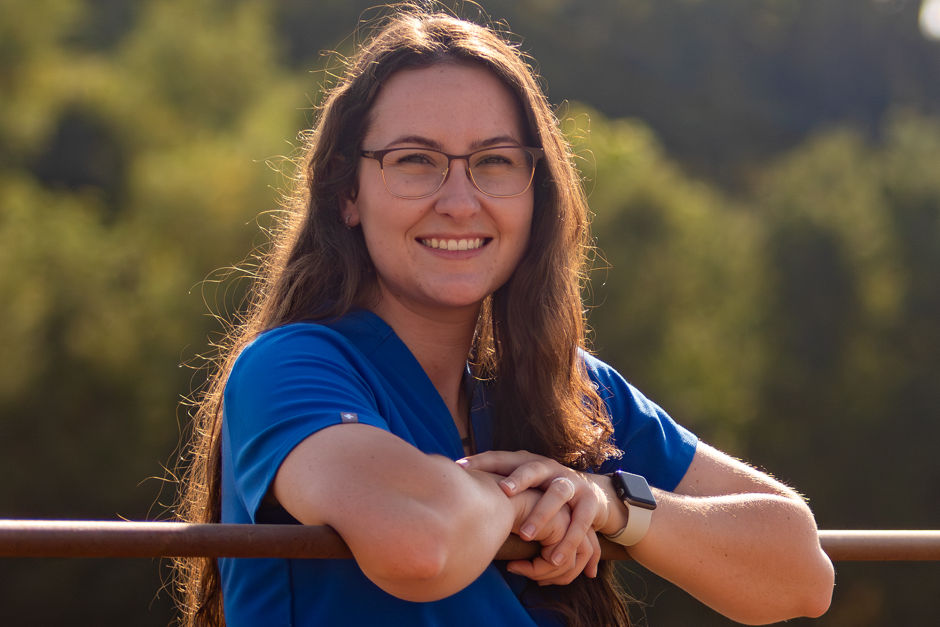
Oct. 29, 2025
Photos by Karen Clifford
For Baylee Stapleton, veterinary medicine isn’t just a career choice — it’s a lifelong calling. Growing up in a rural community surrounded by farm animals, she spent her early days showing cattle, competing in rodeos and caring for the creatures that defined her way of life. In a place where mixed animal veterinarians were few and far between, she saw firsthand how essential their work was — and knew from an early age that she wanted to be one of them.
Stapleton came to the University of Missouri from Izard County, Arkansas, where aspiring veterinarians must look beyond state lines for their education. She pursued her undergraduate degree with veterinary school in mind, selecting Animal Science to build the foundation she’d need. At Mizzou, Stapleton earned a bachelor of science in animal sciences degree and is now studying at Mizzou’s College of Veterinary Medicine.
“Growing up, I had several occasions where, as a cattle owner, I needed a veterinarian and had to drive over an hour to find someone who would see a large animal on emergency,” Stapleton said. “I want to be that resource back home, or any rural area really.”
Learning by doing
A major factor in Stapleton’s decision to choose Mizzou was its emphasis on real-world training. The College of Veterinary Medicine follows a 2+2 model, with the first two years focused on classrooms and laboratories and the final two years spent in immersive clinical experiences.
“The 2+2 program is a game-changer because it gives students an additional year of practical experience working directly with clients and animals,” Stapleton said. “I’m entering my final year of school and have already got as much experience as many graduating veterinarians from other institutions.”
In addition to her scheduled curriculum, Stapleton has taken advantage of multiple extracurricular learning opportunities the college offers, including wet labs with the Small Ruminant Club and the Theriogenology Club. She said these sessions supplement her classroom learning by giving additional practical training in a low-risk environment.
Read more from the College of Veterinary Medicine



